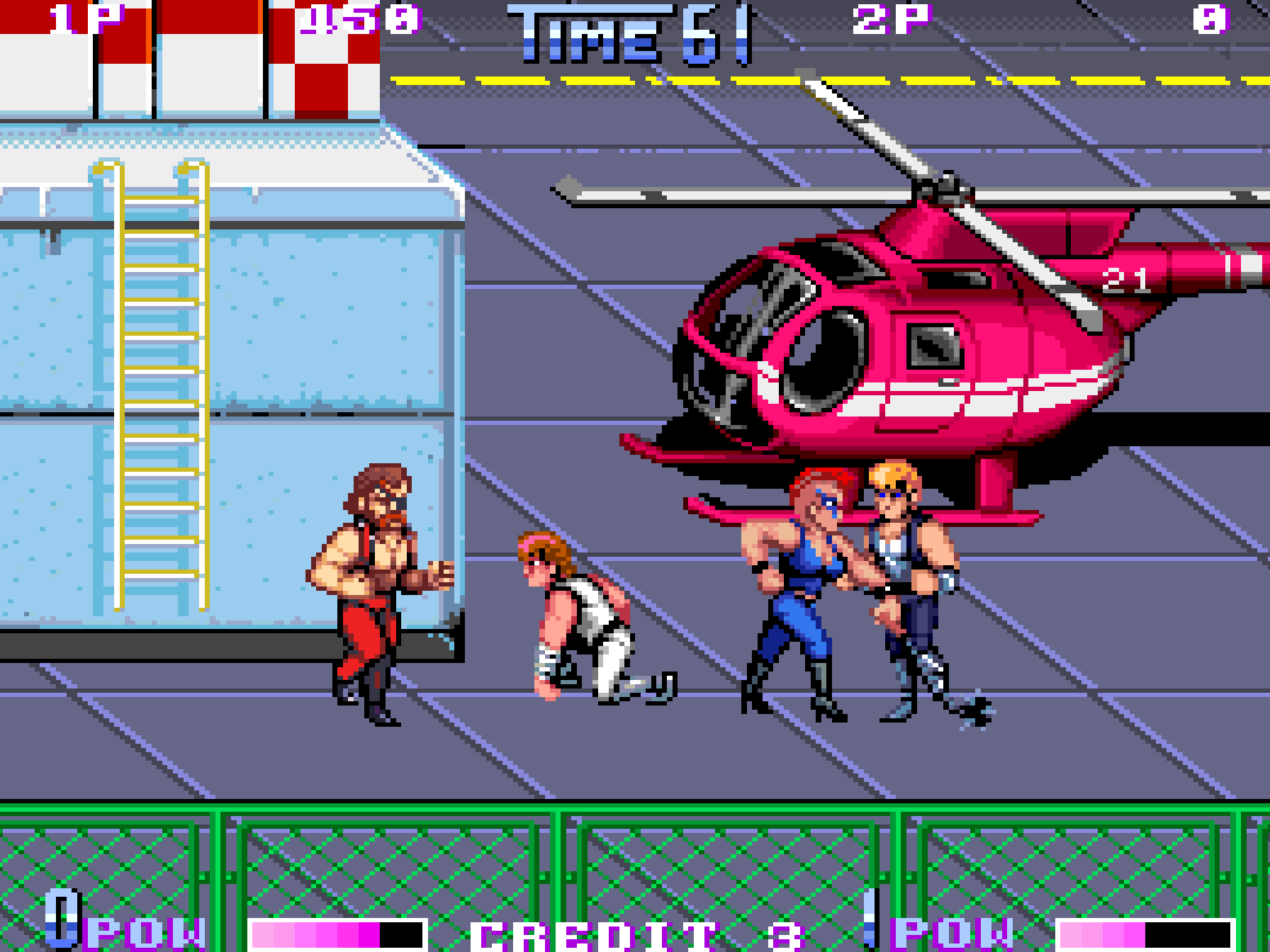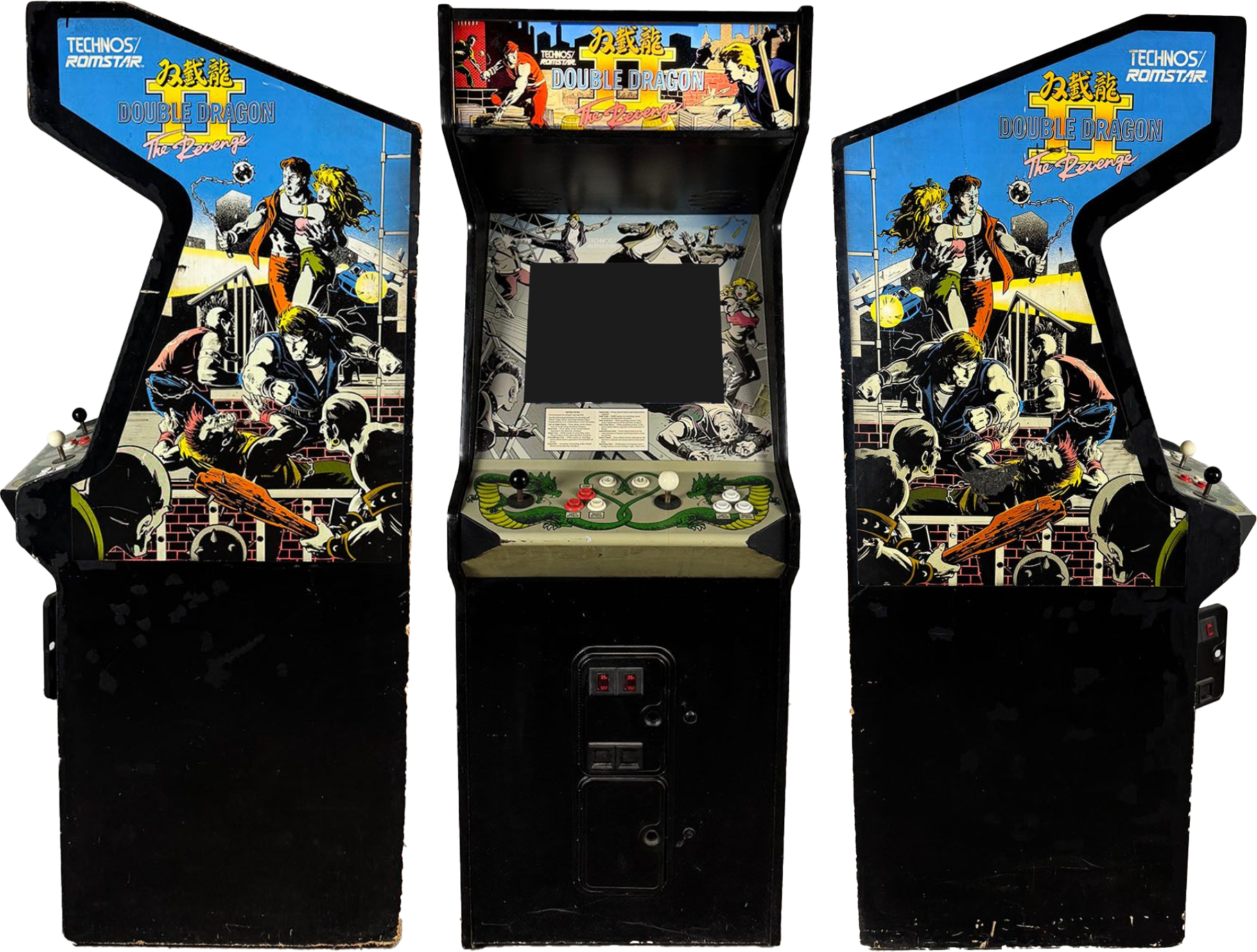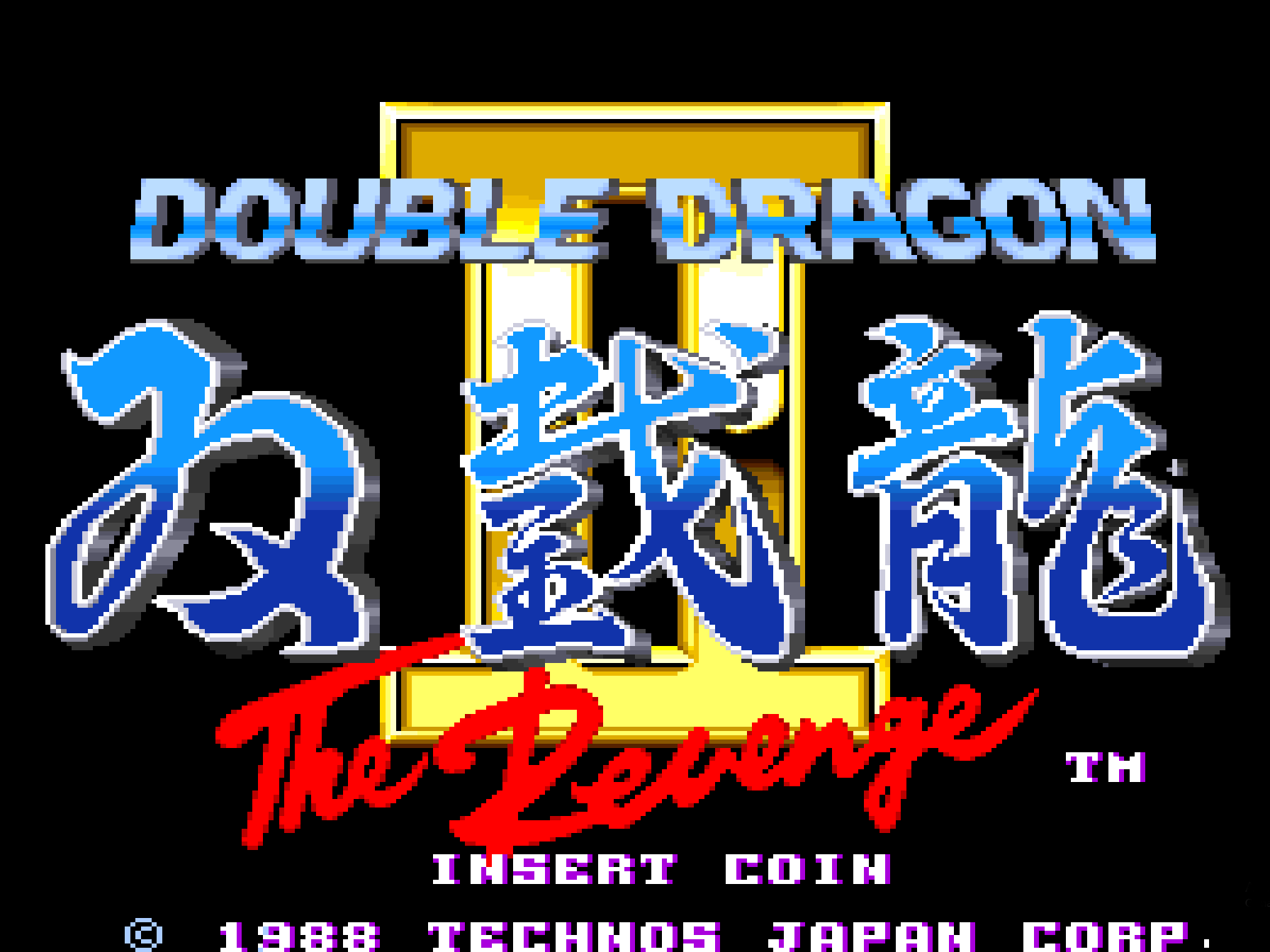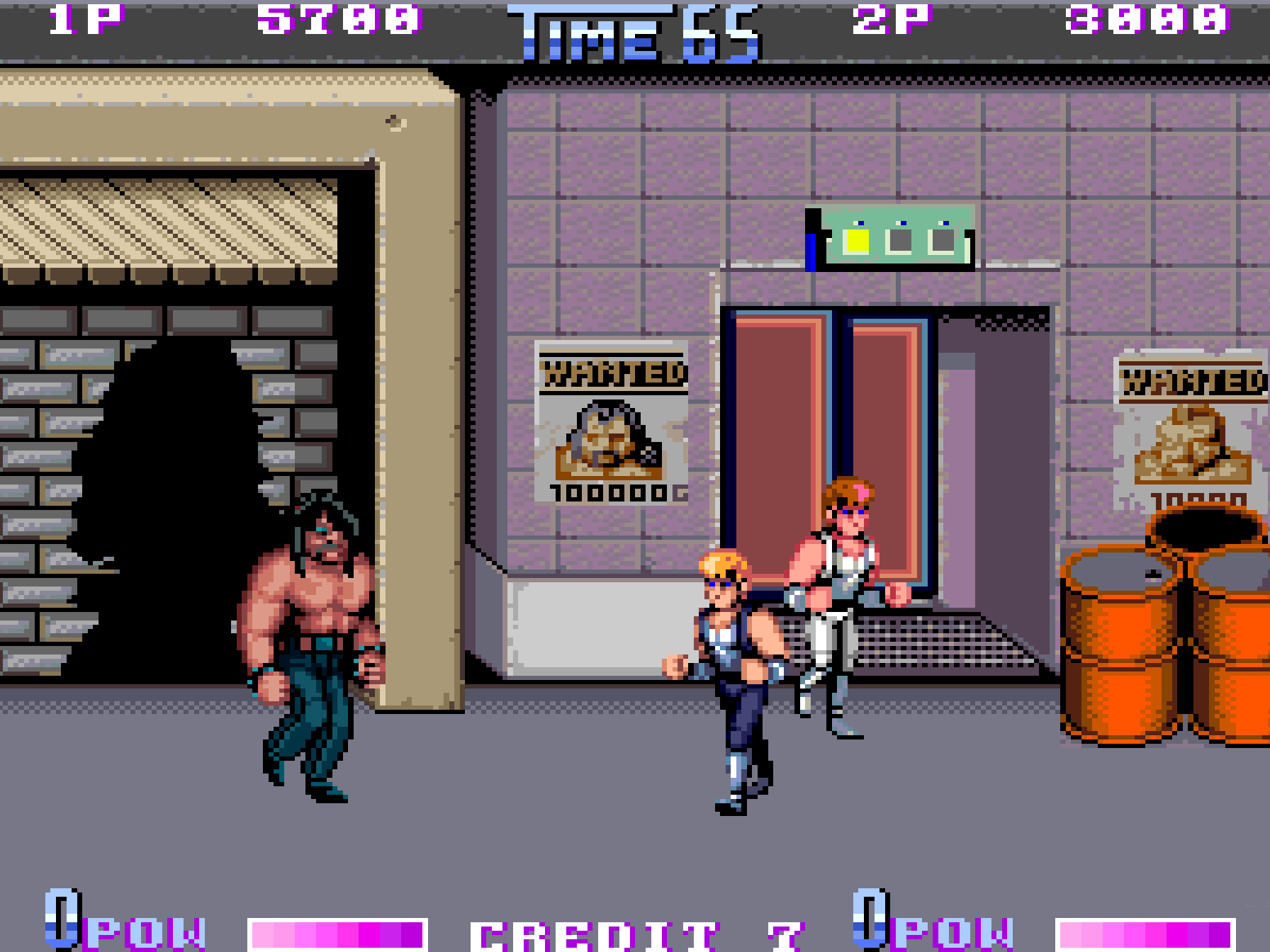Introduction
Released in 1988 by Technōs Japan, Double Dragon II: The Revenge is the arcade sequel to the groundbreaking beat-’em-up Double Dragon. Building on the original’s co-op action, it refined the combat system, introduced new enemies and environments, and delivered a more polished brawler experience. With faster gameplay and a darker storyline centered on revenge, it became one of the most successful arcade follow-ups of the late ’80s.

Development and History
- Developer: Technōs Japan
- Publisher: Technōs Japan
- Release Date: 1988 (Japan and worldwide)
Following the global success of Double Dragon, Technōs sought to improve its formula with better controls, smoother animations, and new strategic elements. Double Dragon II ran on upgraded hardware and continued to define the cooperative arcade brawler genre.

Gameplay Video
Gameplay and Mechanics
Core Gameplay
- Side-Scrolling Beat-’Em-Up: Players control Billy and Jimmy Lee as they fight across various urban and industrial settings.
- Directional Attack System: Uses left/right attack buttons instead of punch/kick, allowing for smoother crowd control.
- Co-Op Combat: Two-player simultaneous play with friendly fire (in some versions).
- Weapon Use: Players can disarm enemies and use whips, knives, pipes, and more.
- Jump Kicks & Knee Attacks: Aerial combat plays a bigger role, including flying knees and spin kicks.
Stages and Enemies
- Environments: Rooftops, alleyways, factories, heliports, and more.
- Enemy Types: Return of Williams, Linda, Abobo, and new foes like Burnov and chained assassins.
- Boss Fights: Each stage ends in a boss with unique moves and patterns.
Challenges
- Increased Difficulty: Faster enemies and tighter hitboxes demand better timing.
- Trap Hazards: Spiked walls, collapsing floors, and conveyor belts add variety.
- Limited Continues: Some arcade cabinets offered no continues, increasing pressure.

Cultural Impact and Legacy
- Genre Evolution: Helped cement the formula for future beat-’em-ups with improved flow and visual clarity.
- Arcade Popularity: Widely distributed and profitable, especially in North America.
- Legacy Ports: Adapted for NES, Game Boy, and later compilations.
- Influence on Brawlers: Inspired later titles like Final Fight and Streets of Rage.

Fun Facts
- Darker Tone: The story revolves around avenging Marian’s death, a shift from the first game’s rescue plot.
- Improved AI: Enemies flank more often and adapt to player patterns.
- Burnov’s Mask: When defeated, Burnov’s face mask drops to the ground.
- No Level Select: Unlike the NES version, arcade players progress linearly.

Conclusion
Double Dragon II: The Revenge took everything that made the first game great and sharpened it—faster combat, refined mechanics, and a more serious tone. It remains a key chapter in arcade brawler history and a go-to example of how to do a sequel right. For fans of classic co-op action, it’s still one of the genre’s high points.

